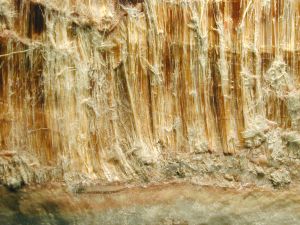Williams v. BASF Catalysts LLC, an appeal argued before the United States Court of Appeals for the Third Circuit, involved allegations that BASF, a manufacturer of talc products, misrepresented itself to plaintiffs in a class action lawsuit, causing them to believe that the company’s talc products did not contain asbestos.
 According to court records, Engelhard (since acquired by BASF) operated a talc mine in Vermont from the late 1960s to the early 1980s. The talc was then processed for use by companies across the United States. Engelhard processed the talc into various products, including Emtal Talc and G&S Talc.
According to court records, Engelhard (since acquired by BASF) operated a talc mine in Vermont from the late 1960s to the early 1980s. The talc was then processed for use by companies across the United States. Engelhard processed the talc into various products, including Emtal Talc and G&S Talc.
These talc products were used in sheet rock, drywall joint compound, car body dusting agents, and balloons used by children. As your mesothelioma attorneys in New England understand, these talc products contain several forms of asbestos, including chrysotile asbestos, serpentine asbestos, and tremolite asbestos. It has been well-established that asbestos causes mesothelioma and lung cancer.
Engelhard discovered, through extensive material testing, that its talc products contained asbestos. The company clearly had knowledge of the presence of asbestos in its products, and kept records of these findings in corporate documents.
Not only did Engelhard and BASF hide the results of these tests, the companies actually marketed its talc products as being asbestos-free — and even claimed they were essentially a safe alternative to the deadly carcinogen.
When the company was sued by the estate of an employee who died as a result of asbestos exposure on the job, these test results were discovered. A company scientist testified during deposition that the products contained asbestos. The parties entered into a settlement agreement following these disclosures. This was a private settlement that required plaintiffs not discuss the case with anyone.
After the settlement, Engelhard issued a company wide memo that required employees to destroy any documents related to talc products. The company stated that this was done in the course of routine business to discard documents no longer needed by the company. All such documents were collected and destroyed or otherwise concealed. It is further alleged that the company created new documents (included falsified records and affidavits) to be used in future discovery requests from other plaintiffs.
In future lawsuits, BASF produced these newly created documents to plaintiffs and threatened these new plaintiffs, saying that these lawsuits were frivolous and legal action would be taken if they were not voluntarily dismissed.
In Williams, after receiving these documents and threats, plaintiffs voluntarily dismissed their causes of action. This scheme worked until a recent New Jersey case that involved the testimony of a company scientist who testified that the products did in fact contain asbestos fibers. An investigation was launched by plaintiffs into what documents were destroyed and where any surviving documents were being kept.
As a result of the New Jersey case, the Williams plaintiffs filed a lawsuit against BASF claiming various kinds of fraud and conspiracy and demanded that BASF not be shielded from liability in future lawsuits by plaintiffs who had their respective cases dismissed. BASF filed a motion to dismiss and claimed it was shielded from liability on these claims. The trial court granted the motion and dismissed the case.
With respect to the dismissal of the fraud charges, the Court of Appeals ruled that the District Court had erred and reversed and remanded the case for further proceedings consistent with its holding.
If you or a loved one is diagnosed with mesothelioma in Massachusetts, call for a free and confidential appointment at (617) 777-7777.
Additional resources:
Williams v. BASF Catalysts LLC, September 3, 2014, United States Court of Appeals for the Third Circuit
More Blog Entries:
Asbestos In City Buildings Poses Risk, August 12, 2014, Boston Mesothelioma Layers Blog
 Mesothelioma Lawyers Blog
Mesothelioma Lawyers Blog

